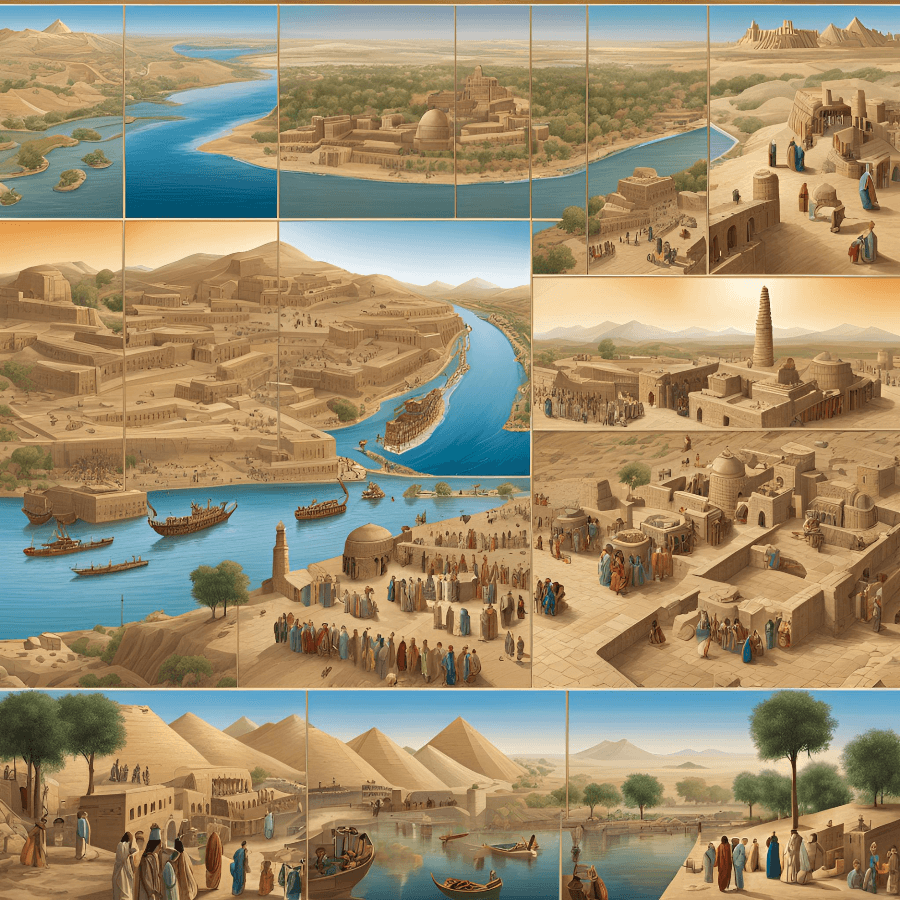Mesopotamian Civilization: The Cradle of Human Culture
The Mesopotamian Civilization of Southwest Asia flourished as one of the world’s oldest civilizations. ‘Meso’ means ‘between’ and ‘potamos’ means ‘river’ in Greek, so the term Mesopotamia refers to the region between two rivers. The Mesopotamian civilization developed within the Euphrates and Tigris river system- what is now Iraq, and later spread over parts of present-day Iraq, Kuwait, Syria, and Turkey. Many civilizations arose in this region over time, contributing numerous advancements such as the first cities, written language, rule of law, and many more.
Historians separated the Mesopotamian civilization into four major stages: Sumerian, Akkadian, Babylonian, and Assyrian, each contributing uniquely to the growth of human advancement.
The Sumerian Civilization: Birthplace of City-States and Writing
The Sumerian civilization flourished in the southern region of Mesopotamia from around 4500 BCE to 2000 BCE. The Sumerians established the first city-states, which had centralized governments, religious institutions, and social hierarchies. Some of the significant Sumerian cities were Ur, Uruk, and Lagash, with the name “Iraq” believed to have originated from Uruk.
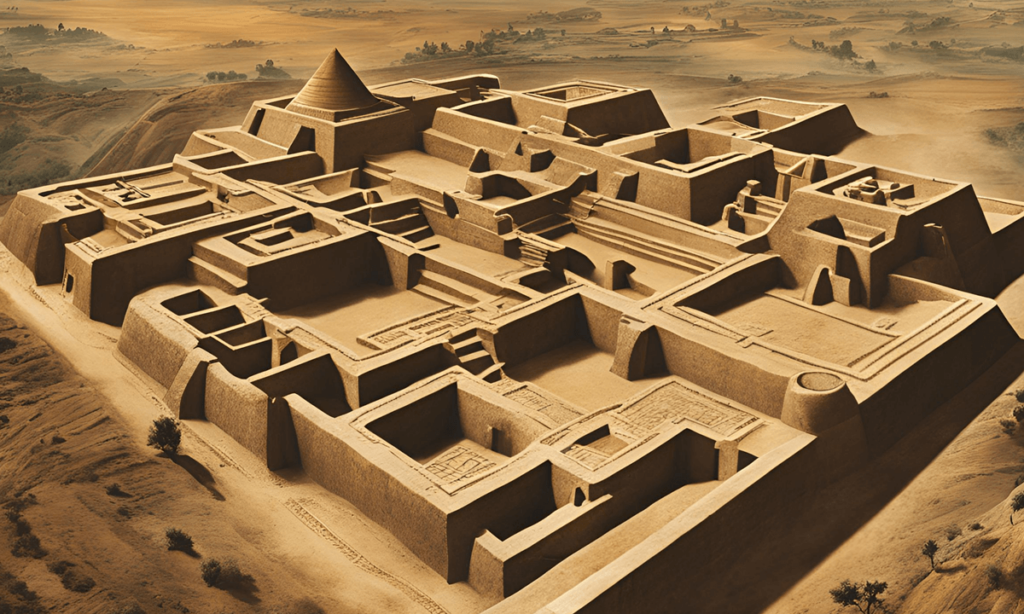
The Sumerians invented the first writing system, ‘cuneiform’, which was written on clay tablets. With their fertile minds, they also invented various tools and techniques. They were the first to use the plow in agriculture. As metals were very scarce, they started to tie the stone blades to wooden handles. They practiced advanced irrigation techniques to cultivate crops like wheat and barley.
The Sumerians created the first written laws to maintain social order and wrote the first epic, “Gilgamesh.” They were polytheists, believing in multiple gods, including Enki, Enlil, and Inanna. They were really good at mathematics and astrology. Some researchers suggest they invented the two-wheeled chariot. The Sumerian civilization laid the foundation of modern society, and their contributions still influence our world today.
Akkadian Civilization: The Rise of Empire and Cultural Synthesis
The Akkadian civilization arose around 2334 BCE to 2154 BCE in northern Mesopotamia, near the city of Akkad. Migrating from the Arabian desert, the Akkadians succeeded in agriculture and developed urban civilization. King Sargon was the most famous ruler of Akkad, aligning the farmers together to form the first regular army and expanding his influence across the region. At one point, under Sargon’s leadership, the Akkadians seized control of Sumer.
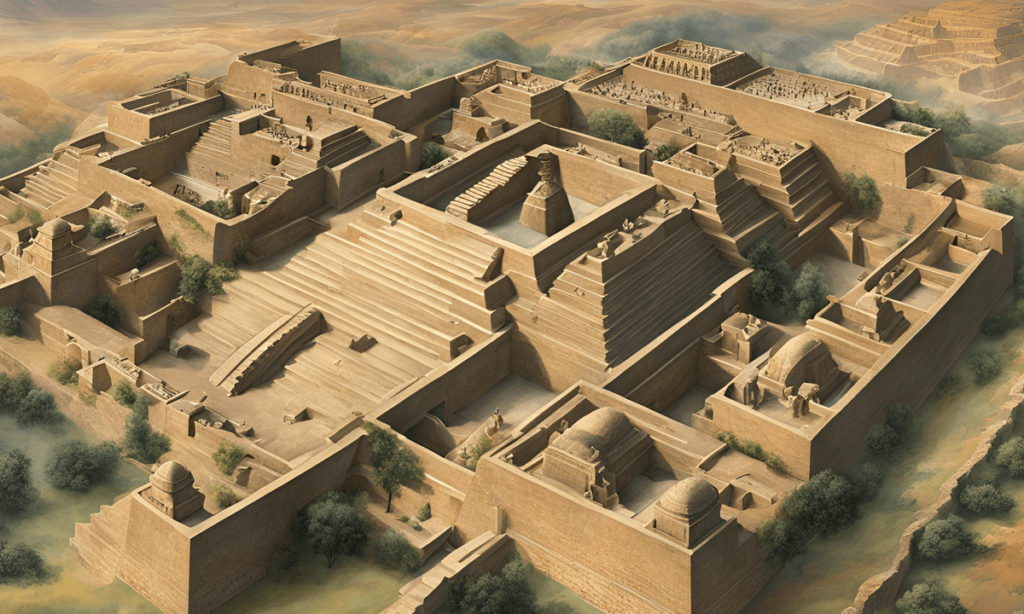
The Akkadians adopted Sumerian writing, trade practices, agriculture, and city-building techniques, further enriching their civilization. They also added new gods like Marduk to the pantheon of Sumerian deities. The Akkadians were known for creating statues, seals, and artwork, and for building grand palaces and temples. They played a significant role in advancing Sumerian culture and civilization.
Babylonian Civilization: The Era of Hammurabi and Legal Innovations
From around 1894 to 1595 BCE, the Babylonian civilization rose in the central and southern regions of Mesopotamia, centered around the city of Babylon, which means “City of the Gods.” It was in the middle of present-day Iraq. Located where the Tigris and Euphrates rivers come closest, it is believed that Babylon was a metropolis with a population exceeding 200,000 people.
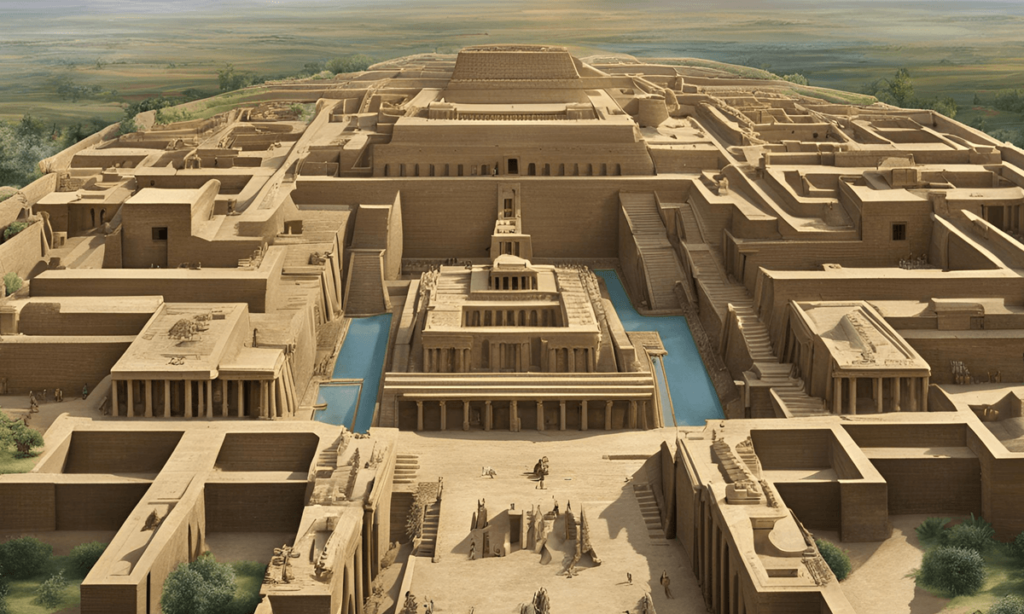
The most notable king in Babylonian history was Hammurabi, who established a powerful kingdom and created the first written legal code, “The Code of Hammurabi,”. This code was based on the principle of “an eye for an eye” and had 282 laws. There were different punishments for people from different social classes.
Babylonians advanced Sumerian and Akkadian knowledge in astronomy, mathematics, and architecture. They were polytheists, with Marduk being their chief god. Babylonian civilization made remarkable contributions to law, literature, science, and architecture, marking a significant chapter in human history.
Assyrian Civilization: Military Might and Architectural Wonders
The Assyrian civilization, based in northern Mesopotamia near the Tigris River, existed from around 2500 to 609 BCE. Ashur was their main city, with other important cities like Nineveh, Kalhu, and Arbela. Nineveh was their last capital and became a cultural and administrative center during their height of power.
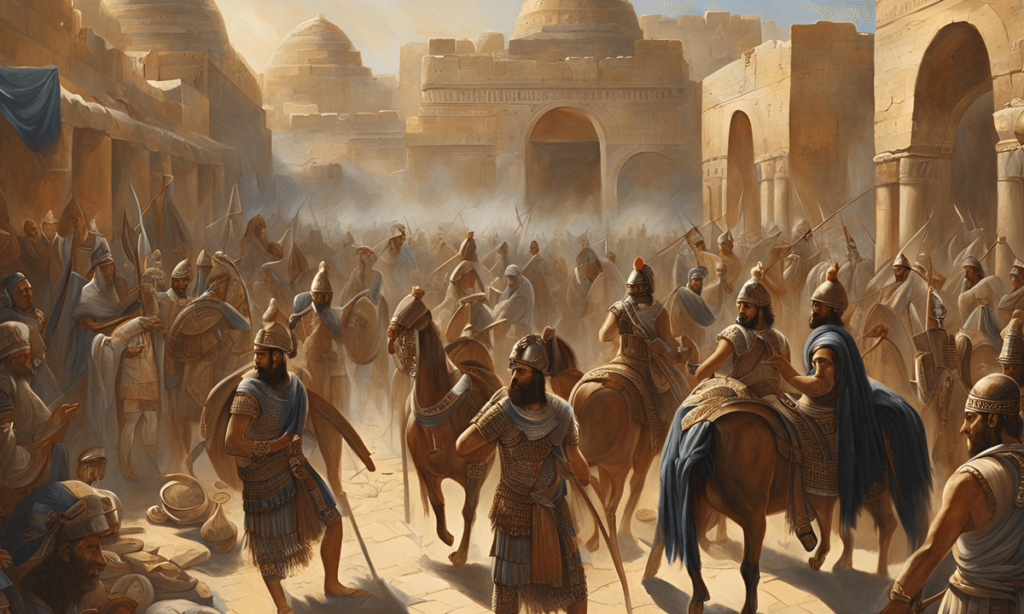
The Assyrians established a centralized government with the king as the supreme ruler. To rule his kingdom, the king appointed several governors and officials in the separate regions of his realm. They were powerful warriors, and the kings ruled their country through their generals. As a result, within a short period, they built themselves into a significant military power. Subsequently, their empire rapidly expanded through various military victories.
The Assyrians were one of the earliest civilizations to use iron weapons and developed advanced road systems for the swift movement of their armies. Their architecture was diverse, with royal palaces adorned with various decorations. They depicted historical events and victories through inscriptions and carvings. The Assyrians believed in polytheism, with Ashur as their chief deity. They named their principal city after the god Ashur.
The Assyrians also played a significant role in wildlife conservation. Under the patronage of the Assyrian king Tiglath-Pileser, several zoos were established in Assyria. The library of Nineveh, built by King Ashurbanipal, was one of the most famous centers of learning and knowledge. It preserved various literary works and laws inscribed on clay tablets, reflecting the Assyrians’ interest in education. The history of Assyrian civilization is one of the richest and most diverse among ancient civilizations, having a profound influence on the early history of humanity.
Understanding Mesopotamian Society: Structure and Social Hierarchy
Mesopotamian society was marked by significant social inequality and was divided into several main classes based on power, wealth, and social status.
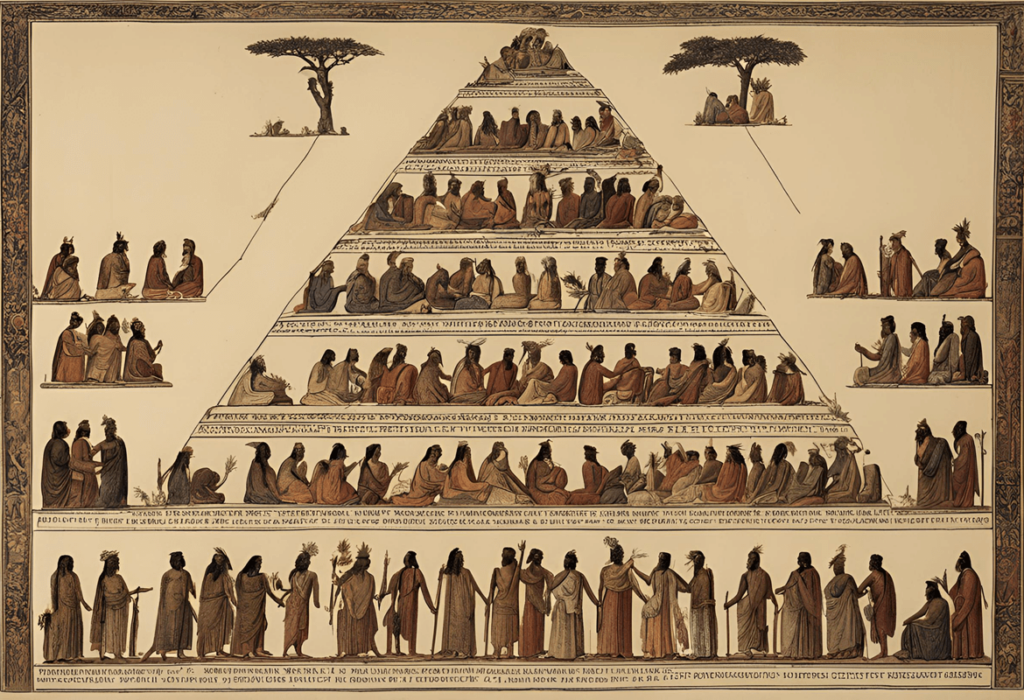
King: The king was the most powerful figure, regarded as the representative of the gods, and held authority over the military, religion, and administration.
Priests: Religion played a significant role in Mesopotamian life, and priests were influential, overseeing rituals and temple administration.
Military: Soldiers and officials belonged to the upper classes, responsible for the kingdom’s defense and governance.
Merchants, Artisans, and Farmers: These middle-class individuals were the economic backbone of Mesopotamian society.
Slavery: Slavery was common, and slaves were the lowest class, working in agriculture, households, and construction.
Marriage and family were patriarchal, with men holding more power in households. Women were often considered the property of the family, and children inherited from their parents.
Religious Beliefs in Mesopotamian Civilization: Polytheism and Worship Practices
Religious beliefs had greatly influenced Mesopotamian society. They were polytheistic, believing that different gods controlled various aspects of their lives and nature. As a result, regular worship and offerings to please the gods were significant social and religious practices.
Each Mesopotamian city had its own god who protected the city. Every god had a dedicated temple and they placed statues of the gods at the center of the city. The Mesopotamians believed that these gods had direct control over human lives.
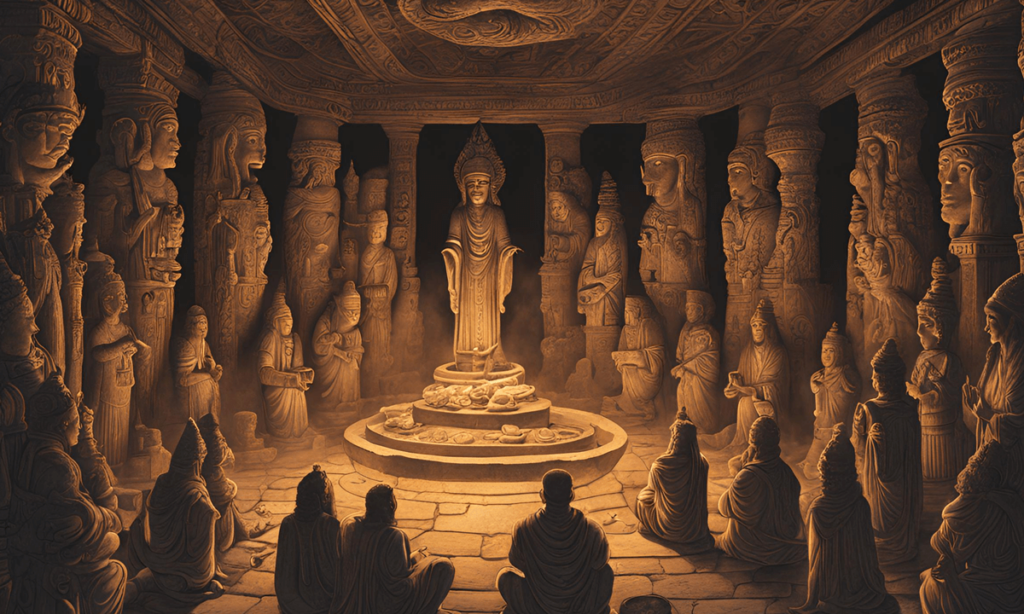
Major Mesopotamian Deities & Ziggurat
Anu: The god of the sky and the chief of the gods.
Enlil: The god of earth, air, and storms, and a major deity of great power.
Ea/Enki: The god of wisdom, magic, water, and creation.
Inanna/Ishtar: The goddess of love, fertility, and war.
Shamash: The god of the sun and a symbol of justice.
Nanna: The moon god, particularly the god of Ur.
The primary place of worship for the Mesopotamians was the “Ziggurat.” This was a pyramid-shaped temple with stairways around it. Each city built a large ziggurat for its main god. The Mesopotamians believed that the gods lived in the ziggurats and that priests served as intermediaries between the gods and the people. The ziggurats were the center of religious and social activities, and various offerings such as food, drinks, and animal sacrifices were made to the gods there.
Beliefs in the Afterlife and Its Influence on Society
The Mesopotamians believed in the afterlife. They thought that after death, the soul would go to a dark world where life was hard and full of suffering. Mesopotamian religion shared many legends about the lives of the gods, stories of creation, and the origins of humanity. One of the most famous is the “Epic of Gilgamesh,” one of the oldest epics in the world. This epic discusses the search for immortality and the human condition, including life, death, and existence.
Religion in Mesopotamia was not only spiritual but also deeply connected with politics, society, and culture. It played a key role in the development of their civilization.
The Mesopotamian Economy: Agriculture, Trade, and Craftsmanship
The foundation of the Mesopotamian economy was agriculture. The Tigris and Euphrates river systems flooded regularly, creating fertile soil that produced abundant crops. The development of irrigation systems made farming easier and more successful.
Wheat and Barley: These were the main crops and the foundation of the Mesopotamian economy.
Dates: Date palm trees were among the most important fruit-bearing trees.
Flax: Flax was used to make linen, which was also used for trade.
In addition to farming, animal husbandry was a significant part of the Mesopotamian economy. Goats, sheep, and various livestock were raised for meat, milk, and wool. The skins (leather), wool, and dairy products were used locally and also traded with foreigners.
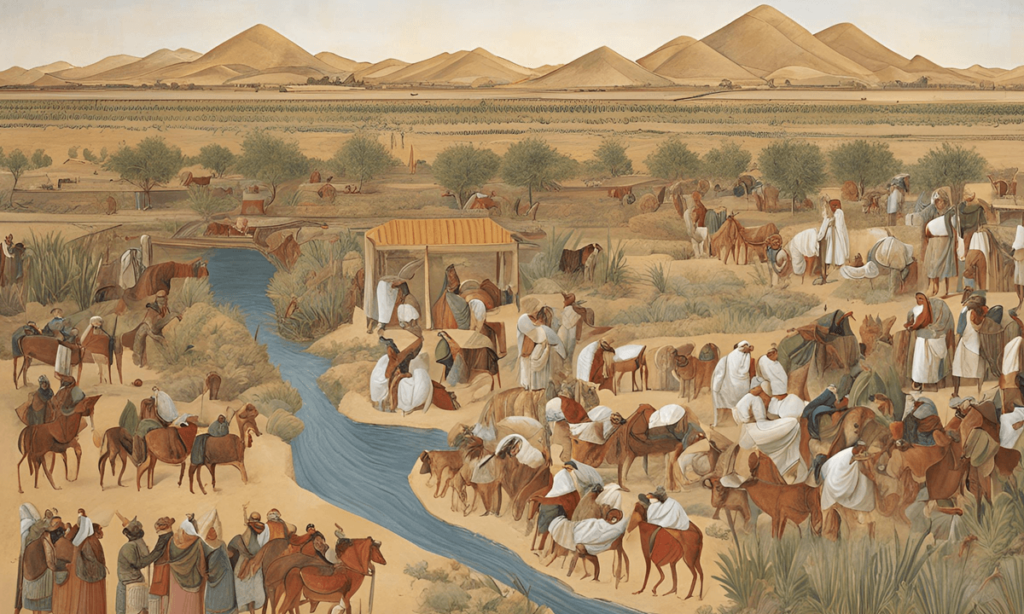
Trade Networks and Artisan Skills
Due to the Tigris and Euphrates rivers, Mesopotamia became a major commercial center. Internal and foreign trade was conducted via both river and overland routes. The efficient communication system made it easy to export goods from Mesopotamia and import products from other regions. Mesopotamia lacked stones and metals, which were imported from Turkey and Iran. Cedar-wood was imported from Lebanon. Export items included food grains, wool, textiles, and various handicrafts. This trade-based economy strengthened Mesopotamian society.
Various forms of craftsmanship and handicrafts were also practiced in Mesopotamia. Artisans made different products using clay, stone, metal, and wood.
Pottery: Mesopotamia produced advanced pottery that was used daily and exported to other regions.
Metalwork: Weapons, jewelry, and other tools were made from copper, bronze, and later iron.
Textiles: Wool and flax were used to make fabrics that were important in both local use and export trade.
A Thriving Economy
In the early stages of the Mesopotamian economy, barter systems were prevalent. Later, silver and copper coins were introduced, which made transactions easier. The Mesopotamian government introduced a tax system. Farmers paid a portion of their crops to the royal treasury, and taxes were also imposed on traders and artisans. These taxes funded the empire’s temples, ziggurats, and military expenses.
Although agriculture was the backbone of the Mesopotamian economy, trade and arts also played important roles. The development of irrigation, trade opportunities, and efficient use of labor made Mesopotamia’s economy prosperous.
Law and Order of Mesopotamian Civilization: The Code of Hammurabi and Judicial Principles
Mesopotamia’s law and judicial system were among the most advanced and organized in the ancient world. After the introduction of Babylonian King Hammurabi’s “Code of Hammurabi,” Mesopotamia’s legal and judicial system underwent significant changes. This legal code, comprising 282 laws, helped maintain social order and provided legal protection for people of all social classes. Since Mesopotamian society was highly stratified, different laws applied to different classes of people based on their social status.
Punishment for Theft: The penalty for theft was death.
Debt and Slavery: People unable to pay their debts would have to sell themselves or their children as slaves for three years.
Family Law: Specific laws governed marriage, inheritance, and the rights of children.
Marriage: Marriage was a contract, and the groom’s family would give a “dowry” to the bride’s family.
Divorce: Men could divorce their wives, but they had to give them a certain amount of property.
Inheritance: Sons were the primary heirs of their father’s property, while daughters had limited rights of inheritance.
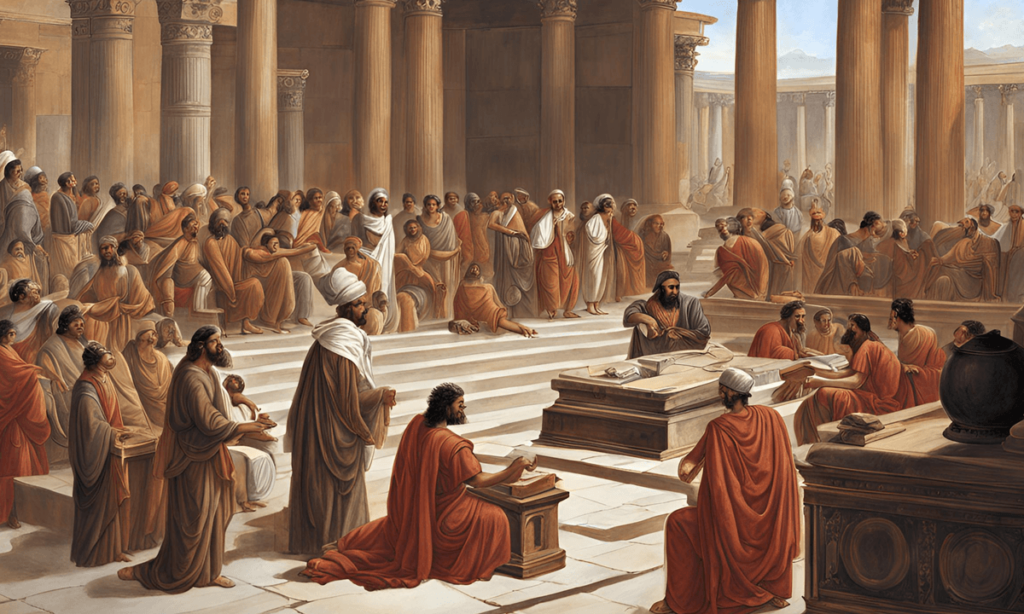
Since Mesopotamia had a trade-based economy, there were special laws for commerce and contracts. Written documents were created for commercial agreements or debt transactions to ensure legal protection. If a business contract was violated, compensation was required, and the punishment for fraud was severe.
The legal system in Mesopotamia placed great emphasis on evidence. Criminal investigations often rely on the practices of witnesses, sworn oaths, and written documents to establish facts. Judges would deliver verdicts in court based on witness testimony and evidence. The judicial process was democratic and orderly. Written documents were crucial in business and personal contracts, and they would settle disputes based on these documents.
Mesopotamia’s legal and judicial system was highly organized and helped maintain social stability and ensure justice for people of all classes.
Contributions of Mesopotamian Civilization: Advances in Knowledge, Science, and Literature
Mesopotamia made significant advancements in knowledge, science, and literature. They made extraordinary contributions to astronomy, mathematics, medicine, architecture, and literature, which influenced many later civilizations.
Advances in Astronomy and Mathematics
Astronomy: The Mesopotamians were pioneers in astronomy and astrology. They observed the sky and tracked the movements of stars and planets. The people at that time created a calendar based on lunar months, with 12 months in a year, starting with the new moon. They were the first to identify seven celestial bodies (Mercury, Venus, Mars, Jupiter, Saturn, the Sun, and the Moon). Based on these celestial bodies, they tried to predict fate, which laid the foundation for modern astrology.
Mathematics: Mathematics flourished among the Mesopotamians, particularly during the Babylonian era. They based their number system on 60 (sexagesimal system), which people still use today for calculating seconds, minutes, and hours. This system helped them solve complex problems in astronomy and mathematics. They used complex methods for addition, subtraction, multiplication, and division, and had skill in calculating areas and volumes. They also solved simple and quadratic equations.
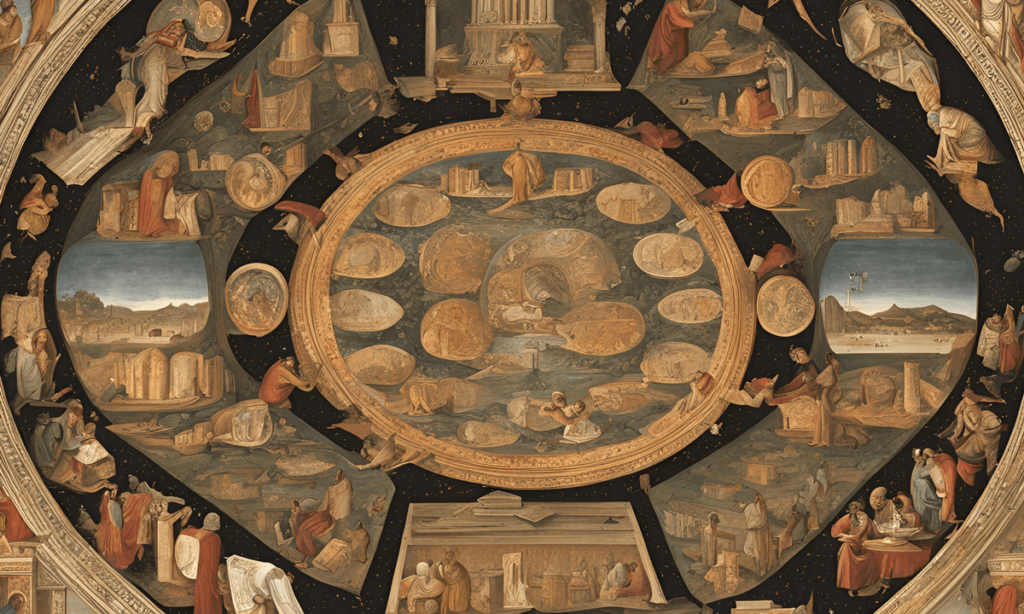
Medicine and Healing Practices
Mesopotamian medicine was influenced by religion, astrology, and natural science. They believed that the displeasure of gods or the curse of evil spirits would cause physical illness. As a result, religious rituals and magic were often part of medical treatments. However, they also developed effective treatments and medicines using plants. Some Mesopotamian physicians even performed surgeries that demonstrated the advancement of their medical knowledge.
Architectural Achievements
Mesopotamia had highly developed architecture, especially their “Ziggurat” temples. These pyramid-like structures surrounded by staircases were a hallmark of their architecture. They commonly used bricks for construction. They employed specialized techniques for building temples, palaces, and city walls. Famous examples of their architecture include Babylon’s “Ishtar Gate” and the “Hanging Gardens,” which were among the finest examples of Mesopotamian architectural prowess.
Literature & Knowledge
The most famous piece of Mesopotamian literature is the “Epic of Gilgamesh.” This epic tells the story of a hero-king named Gilgamesh and his adventures, exploring themes of life, death, and the quest for immortality. The epic explores deeply into the human condition and the concept of mortality. The “Epic of Gilgamesh” is one of the oldest known works of literature in the world, and the literature and culture of many later civilizations bear the mark of its influence.
The knowledge and literary achievements of Mesopotamia were among the most influential and rich in the ancient world. Their advancements in mathematics, astronomy, medicine, and literature laid the foundation for many later civilizations.
The Lasting Legacy of Mesopotamian Civilization
Mesopotamian civilization is considered a major milestone in human history. Their contributions—including the first cities, written language, rule of law, agriculture, and trade—served as the foundation for human progress. From the Sumerians’ ‘cuneiform’ script to Hammurabi’s legal code, the innovations and social structures of Mesopotamian civilization remain relevant in the modern world.
Interested in how the past shapes our future? Read How Ancient Civilizations Have Influenced Modern Technology to uncover the lasting impact of ancient innovations.

